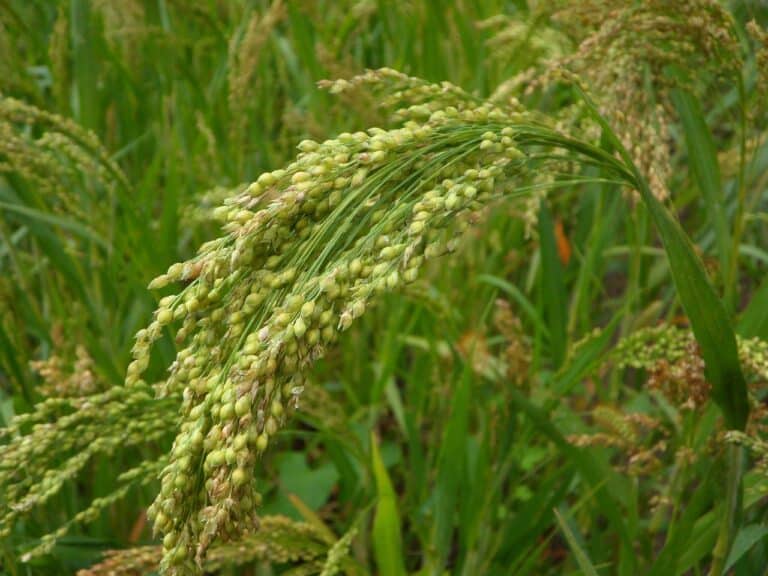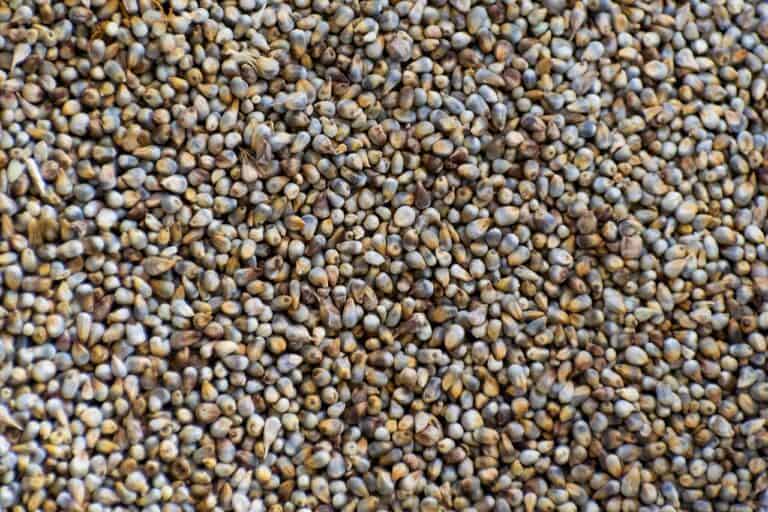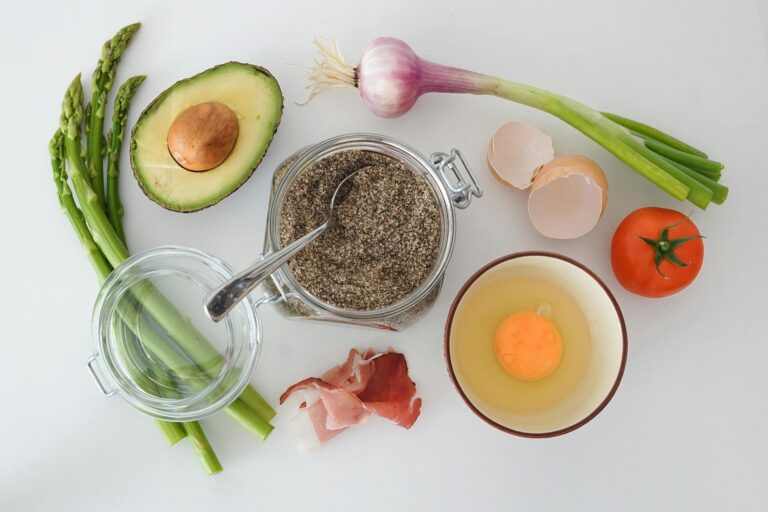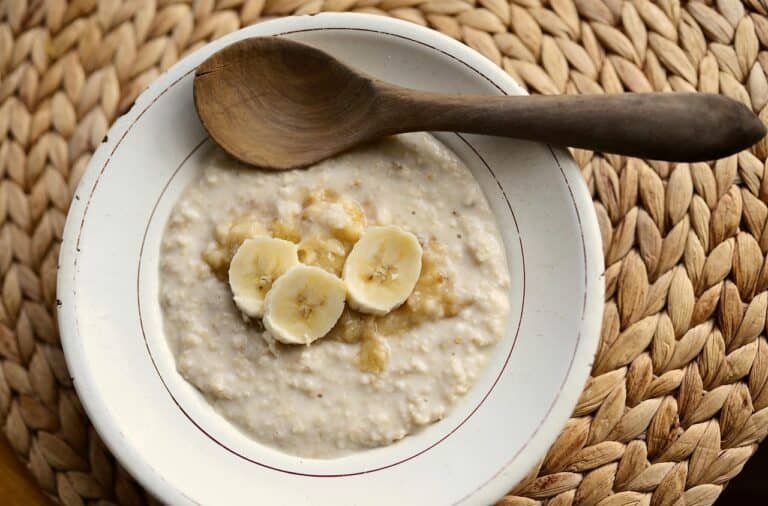You’ve probably heard that millets are healthy—but what about Kodo millet? This lesser-known grain is quietly making a comeback in health circles, and for good reason. In this post, we’ll break down exactly why Kodo millet might be worth adding to your plate.
Yes, Kodo millet is good for health. It’s rich in fiber, low in fat, and packed with antioxidants—making it great for digestion, heart health, and blood sugar control. Plus, it’s gluten-free and easy to include in everyday meals.
What is Kodo millet?
Kodo millet has been grown in India for over 3,000 years and is one of the hardiest millets around. It thrives in poor soils where other crops fail and is naturally drought-resistant. While it usually takes 4 to 6 months to mature, newer short-duration varieties now grow faster. The plant grows up to 90 cm tall, and its grains range from light red to dark grey. Kodo millet also stands out for having the highest dietary fiber content among all millets.
Nutrional Profile of Kodo millet
Kodo millet is rich in niacin, vitamin B6 (pyridoxine), folic acid, and essential minerals. It also contains lecithin, a compound known to support brain health and strengthen the nervous system.
| Nutrients | Value per 100 grams |
| Energy (Kcal) | 331 |
| Protein (g) | 8.9 |
| Carbohydrate (g) | 66 |
| Fat (g) | 2.5 |
Learn more about millets and its types with detailed nutritional value.
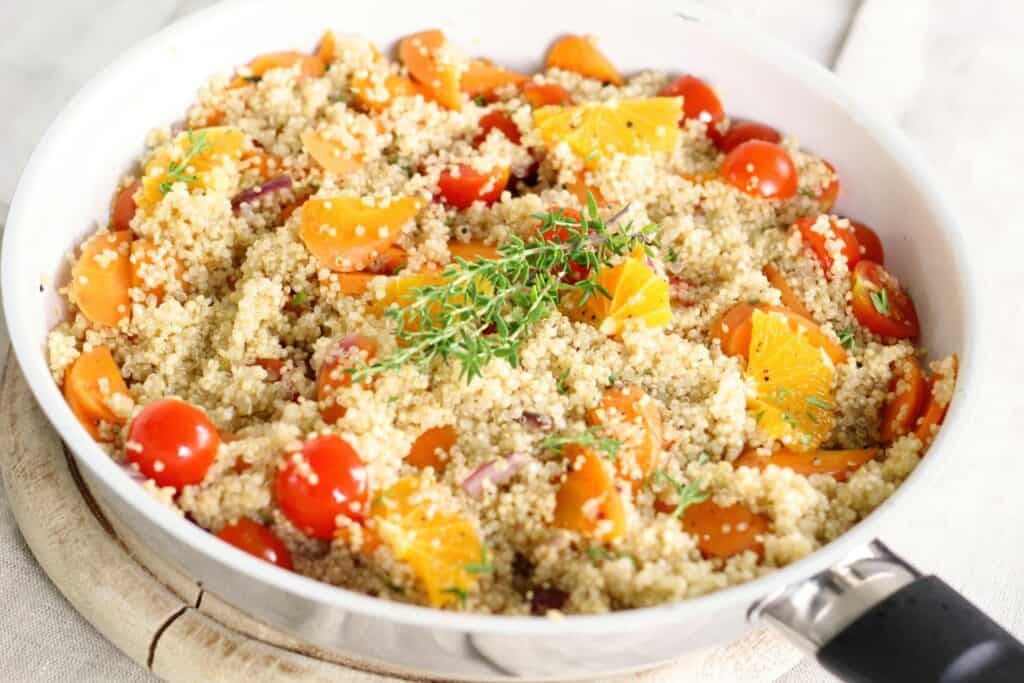
Benefits of kodo millet
- Supports Digestive Health – Kodo millet is high in dietary fiber, which helps prevent constipation, reduces bloating and gas, and supports the growth of healthy gut bacteria.
- Helps Manage Blood Sugar – With a low glycemic index and natural polyphenols, Kodo millet releases sugar slowly into the bloodstream, making it a smart choice for managing type 2 diabetes.
- Aids in Weight Loss – Its fiber and polyphenol content keep you full longer, reduce inflammation, and help prevent fat buildup—making it great for weight management.
- Promotes Heart Health – Rich in potassium, magnesium, and prebiotic fiber, Kodo millet may help lower blood pressure, reduce bad cholesterol, and support overall heart function.
- Strengthens the Nervous System – Kodo millet contains lecithin, B vitamins, and essential minerals that support brain health and strengthen the nervous system.
- Supports Kidney Health – With low potassium and uric acid levels, Kodo millet can be beneficial for people with kidney disorders and may help prevent gallbladder or kidney stones.
- May Reduce Cancer Risk – The grain contains antioxidants like phenolic acids, phytic acids, and tannins that may help reduce the risk of certain cancers by protecting cells from damage.
- Boosts Healing and Fights Aging – Kodo millet is rich in antioxidants and polyphenols that fight free radicals, support cell repair, and may help slow signs of aging.
- Safe for Gluten-Free Diets – Naturally gluten-free, Kodo millet is ideal for those with celiac disease or gluten intolerance.
- Beneficial for Postmenopausal Women – Its high antioxidant and nutrient profile may help manage metabolic conditions in postmenopausal women.
how to eat kodo millet?
People often ask how to eat kodo millet or how to use kodo millet. Here’s how you can use or eat kodo millet in your day to day life:
| Dish | How to Make It | Best For |
|---|---|---|
| Kodo Millet Rice | Cook plain and eat with dal, sabzi, or sambar | Lunch/Dinner |
| Kodo Millet Khichdi | Cook with moong dal, turmeric, and veggies | Comfort food |
| Kodo Millet Upma | Sauté mustard, curry leaves, onion + millet + water + cook | Breakfast |
| Kodo Millet Dosa/Idli | Ferment Kodo millet + urad dal batter overnight | Breakfast or snacks |
| Kodo Millet Pulao | Stir-fry spices, veggies, then cook millet with them | Main course |
| Kodo Millet Roti/Paratha | Use Kodo millet flour alone or mixed with wheat flour | Lunch box |
| Kodo Millet Salad | Combine cooked millet with fresh veggies, lemon, and herbs | Light meals |
| Kodo Millet Porridge | Boil with milk/water + jaggery for sweet; add salt and spices for savory version | Kids/Seniors |
| Kodo Millet Cutlets/Tikkis | Mix with mashed veggies/spices, shape and pan-fry | Snacks |
Frequently Asked Questions
when to eat Kodo millet for weight loss?
The best time to eat Kodo millet for weight loss is during breakfast, lunch, or an early dinner. Its high fiber keeps you full for longer, curbs cravings, and helps control calorie intake throughout the day. Whether it’s upma in the morning, a light pulao for lunch, or a simple khichdi at night—Kodo millet fits well into any weight-loss-friendly meal plan.
is kodo millet good for diabetes?
Absolutely. Kodo millet has a low glycemic index and is rich in polyphenols, which help manage blood sugar levels. It’s a safe and smart choice for diabetes.
Should we soak kodo millet?
Rinse 1 cup of Kodo millet and soak for 15–30 minutes(up to 4 hrs for batter). Boil with 2.5–3 cups of water until soft (about 15–20 minutes). Fluff and serve like rice or make dishes like khichdi, pulao, or upma.
Can we eat Kodo millet daily?
Yes, Kodo millet can be eaten daily in moderate portions. It’s packed with nutrients and is a great gluten-free substitute for refined grains like white rice.
Is Kodo millet better than rice?
Nutritionally, yes. Kodo millet has more fiber, a lower glycemic index, and provides longer-lasting energy. It’s a healthier alternative to polished white rice.
Is Kodo millet gluten free?
Yes. Kodo millet is 100% gluten-free and safe for people with celiac disease or gluten sensitivity.
does kodo millet cause gas or bloating?
Not usually. However, like all high-fiber grains, it’s best to start with small portions and drink enough water to avoid gas or bloating.
What are the side effects of Kodo millet?
There are no major side effects. But eating it in large amounts without enough water may cause bloating. Always balance it with hydration and variety.
Does Kodo millet cause constipation?
No, Kodo millet is actually high in dietary fiber, which helps improve digestion and prevents constipation. Just remember to drink plenty of water to help fiber do its job well.
Is Kodo millet and quinoa the same?
No, they are different grains. Kodo millet is an ancient Indian millet, while quinoa is a seed native to South America. Both are gluten-free and nutritious but have different tastes and cooking methods.
Is Kodo millet good for kidney patients?
Yes, Kodo millet is generally good for kidney patients because it has lower potassium and phosphorus compared to other grains. However, always consult your doctor or dietitian before adding it to a kidney-friendly diet.
Is Kodo millet and foxtail millet the same?
No, they are different types of millets. Kodo millet is coarser and takes longer to cook, while foxtail millet is smaller and cooks faster. Both are nutritious and have unique health benefits. For more detailed explanation, read types of millets blog post.
Is Kodo millet good for fatty liver?
Kodo millet’s high fiber and antioxidant content may support liver health and reduce fat accumulation. Including it as part of a balanced diet can be beneficial for managing fatty liver.
final thoughts
If you’ve been stuck eating the same old rice or wheat every day, Kodo millet is your upgrade. It’s simple, filling, and does more for your body with less effort—just the kind of grain your plate (and gut) will thank you for.

